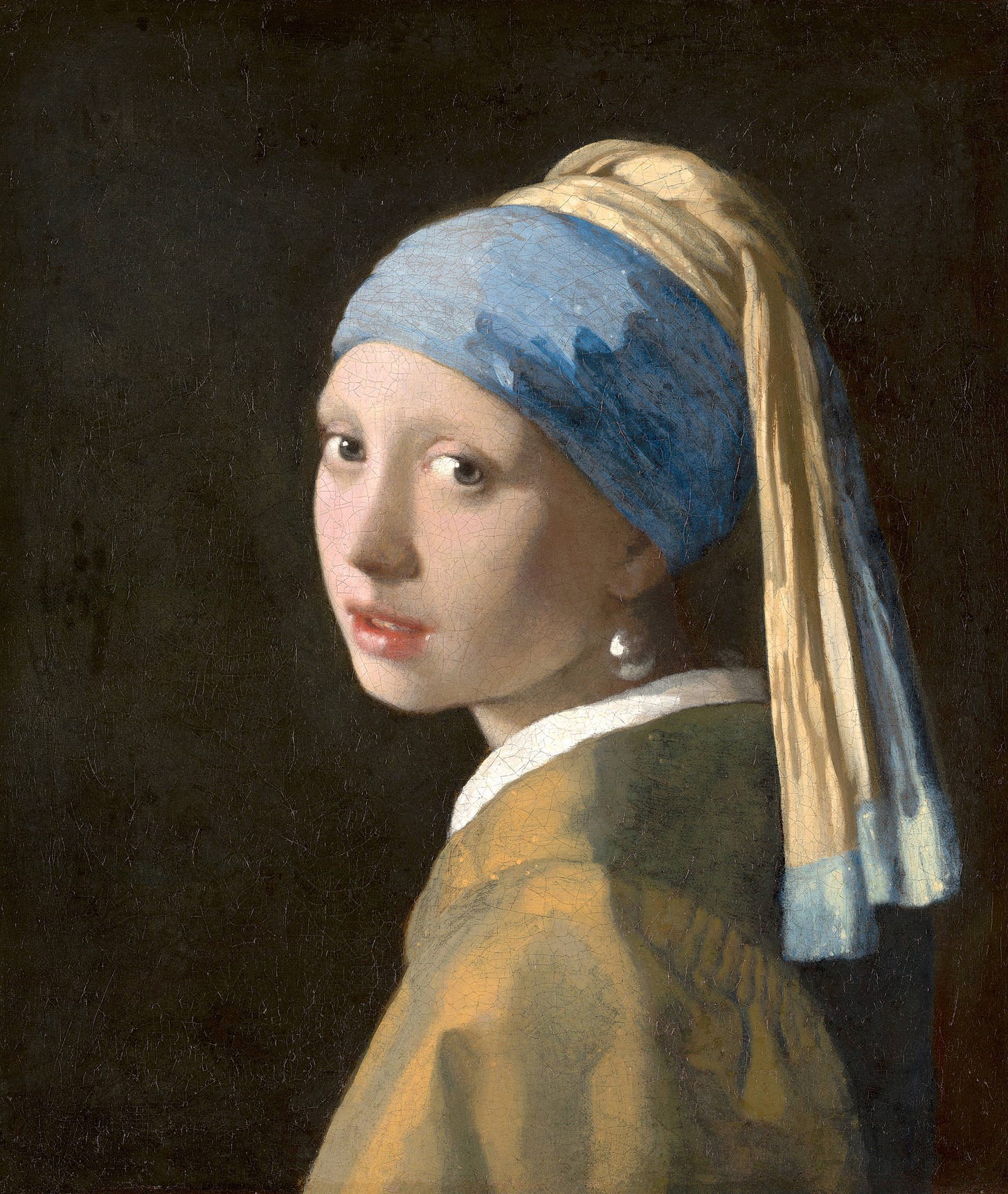
In the middle of the journey of our life I came to myself within a dark wood where the straight way was lost.
—Dante, The Divine Comedy (1321)
Arriving at midlife is disorienting and surprising, a shocking mix of disbelief and gratitude. A century ago life expectancy hovered around the late 50s; the creation of vaccines, antibiotics, and expanded access to medical care since the early twentieth-century resulted in longer lifespans. Aging for women is a fraught reality in Western culture where youthfulness is valued, prioritized, privileged. We enter the second half of life thankful for our health, a gift easily taken for granted, and fearful of the inevitable and unavoidable bodily changes headed our way. What does it mean to transition from the first half of life to the second half? Artists and philosophers have long considered the reality of aging across centuries.
Most recently, The Substance (2024) depicted a fictional actress’s desperate actions to reverse the effects of aging. Her pursuit of a “fountain of youth” called “the substance” became a body horror film I watched through closed eyes; the final act was so grotesque I hid behind a blanket on Halloween night while watching. Despite my aversion to the squishy sounds and excess of viscera, the theme of aging as horrific fastened itself in my psyche. In addition to The Substance, 2024 was also the year of Miranda July’s frank and irreverent (and controversial) novel All Fours about a 45-year old women facing her own mortality as well as Alison Espach’s The Wedding People about another woman in her 40s reckoning with the realities of a life in which she feels no agency. Maybe these recent stories are on my radar because it’s where I find myself. Maybe it’s because the publishing industry is tilted towards (white) women between 30 and 50. Maybe it’s because women are finally creating stories about their experience. It’s most likely a result of all these factors and more.
Jewish-German novelist and journalist Sybille Bedford, who narrowly escaped Nazi Germany during WWII, wrote about the realization that comes with entering midlife in her 2005 memoir Quicksands. She observes how when we are young, we often feel we're just rehearsing for our "real" life that will begin later - only to eventually discover that the performance had already begun, that the curtain was up all along, and that what we thought was practice was in fact the main event. Confronting the truth that the first half of life isn’t simply a rehearsal for our actual life is terrifying. Mix this conscious (or unconscious) awareness with the physical effects of aging and I’m amazed there aren’t more mid-life crises.

How do we conceive of the entirety of our existence without falling into an existential crisis? Nobel prize winning Norwegian author Jon Fosse attempts to encapsulate a life in his 2000 novella Morning and Evening. The book walks you through the first day of one man’s life on earth — we witness his birth, his naming, his entering the world. In the latter half you witness his final day on earth. The prose is circular returning again and again to various moments, encounters, memories. It reflects the way we experience time as seamless through its lack of a single period in the entire book.
Anne Helen Peterson recently named the liminal experience between the first half of our life and the second half of our life “The Portal,” an apt and futuristic term. However we conceive of this hinge experience in which the door to our past and the door to our future swings, the between existence hopefully becomes fertile ground for envisioning the hopes, values, and dreams that will be our lighthouse gently guiding us as we navigate our own uncharted waters.







